Tool Test: Compact Cordless Routers
These seven popular models all have great power, but balance and bit visibility make a winning tool.

Synopsis: Routers are versatile tools, and lithium-ion batteries and brushless motors have made them even more so. In this article, cabinetmaker and serial remodeler Arthur W. Henderson III shares the results of testing seven cordless compact routers. In addition to profiling each router, he shares his run-time testing results and his router tips and tricks.
When I was 15 years old, I wanted to build a custom-size linen cabinet for a bathroom remodel, and I bought my first router to help with its construction. Shortly afterward, I built a raised-panel door and marveled at the pile of sawdust beneath my feet. Because of their versatility, routers are still among my favorite tools. I can profile edges, plow dadoes, cut mortises, make identical pieces, flush-trim veneer and laminate, reproduce architectural elements, and build custom doors.
Lithium-ion batteries and brushless motors have revolutionized cordless tools, including compact routers. In addition to the normal benefits of faster setup and less tripping on extension cords, getting rid of the cord on a router allows you to focus on what you’re doing without the risk of a snagged cord messing up your work.
I’ve been using a Makita cordless router for more than four years. I was so pleased with it that I purchased a second within a few months of buying the first. Given my fondness for routers, I was happy to conduct a test of compact cordless routers for FHB when I was asked. My test included models from Bosch, DeWalt, Makita, Metabo HPT, Milwaukee, Ridgid, and Ryobi. All have amazing power and capability.
Most of the cordless compact routers in the test share some general features. All have a spindle lock for one-wrench bit changes, and all but the Bosch have removable bases. Their baseplates have relatively small diameters, typically less than 3-1⁄4 in. They are also tall, about 9-1⁄2 in. high, because the battery is on top of the tool. This raises its center of gravity, making it all too easy to tip the tool as you are guiding it along the workpiece. This can cause a less-than-perfect profiled edge—and a frustrated finish carpenter.
I also ran test cuts with some of the tools using smaller, lighter 2-Ah batteries. I appreciated the lighter weight, but there wasn’t any significant change in the balance of the tools. While Milwaukee is the only manufacturer that improves the balance issue by providing a second, larger baseplate with their tool, shop-built baseplates are a viable option and aftermarket baseplates are available (see facing page).
No matter which router you choose, it is important to remember that the best router is the router that is used safely. Ear protection, eye protection, and respiratory protection are a must. Wood chips and shrapnel from a damaged router bit (or nails embedded in lumber) could easily cause a blinding eye injury. Hearing loss is preventable with earplugs or earmuffs. Many of these routers come with a dust-collection shroud, and all performed well when coupled with a vacuum. I think the hose throws off the balance, so I prefer to use a respirator.
Milwaukee 2723-20
The Milwaukee has the best bit visibility, thanks to a large-diameter opening in the base and unmatched brightness from two LED lights. It’s solidly constructed, with the main body and base manufactured from metal parts. It takes two hands to turn the tool on or off with a dust-protected rocker switch. This router is well-balanced and feels good in the hand. Thanks to an engraved scale with 1⁄16-in. graduations and a screw-type depth adjustment with 1⁄64-in. markings, depth adjustments are fast and precise.
One downside is that the depth-adjustment screw projects from the housing and detracts slightly from the tool’s ergonomics. I unknowingly changed the bit depth on a few occasions when my thumb was resting on the screw. I learned not to grip the tool this way, so this was by no means a deal-breaker. This router comes with a dust-extraction port and an edge guide, and is the only tool that comes with two baseplates—4 in. dia. and 5-3⁄4 in. dia.—made from polycarbonate. The larger baseplate improves the stability of the tool, the primary weakness of this category.
Price $200 (tool only)
Power 18v
Weight 4.6 lb.
Base Diameter 2-7⁄8 in.
Illumination Two LEDs
Brake Yes
Bit Visibility 5 out of 5
Ergonomics 4 out of 5
Ryobi PCL424
For a low price, this router boasts impressive features, but some tradeoffs were made with its construction to keep the price down. Its base is cast metal, but the remainder of the tool is plastic, and the depth scale is a sticker. Turning the tool on and off is accomplished by a sliding switch that requires two hands to operate. Depth is adjusted with a graduated screw that has a release lever for fast macro-adjustments and base removal. Bit visibility is good, thanks to a clear polycarbonate baseplate and a single LED light.
The base has a slightly larger footprint than that of most of the competing routers and comes with a dust-collection chute. The battery has some wiggle when connected to the tool, and the collet wrench is thin stamped steel. Although this router is comfortable to hold, its balance is just a little awkward. This is not a polished tool, but I was pleasantly surprised at its performance. It can easily keep up with an ambitious carpenter. The biggest selling point of the Ryobi is its low price, which helped it become the best-value winner.
Price $100 (tool only)
Power 18v
Weight 4.2 lb.
Base Diameter 2-5⁄8 in.
Illumination Single LED
Brake No
Bit Visibility 5 out of 5
Ergonomics 4 out of 5
Bosch GKF12V-25
This 12v router has a unique shape that fits right into my palm and feels like a natural extension of my hand. It has a sliding power switch that can be operated with one hand. Despite the lack of a removable base, bit changes are fast and easy thanks to a spindle lock and easy access to the collet nut. Height adjustment is simple, and micro-adjustment is done via a screw-type mechanism with 0.04 in. of movement per revolution.
This router lacks built-in lighting and has poor visibility of the bit, so it is not ideal for freehand mortising. It is clear that the Bosch was built for edge-profiling, however, and it excels at this task. After routing thousands of feet of edge profiles for this review, I found the ergonomic design of this router to be a welcome change. I liked it so much that I purchased one. I keep a 5⁄32-in. roundover bit in the collet, so it’s always ready to ease edges.
Price $140 (tool only)
Power 12v
Weight 2.8 lb.
Base Diameter 2-1⁄4 in.
Illumination None
Brake Yes
Bit Visibility 1 out of 5
Ergonomics 5 out of 5
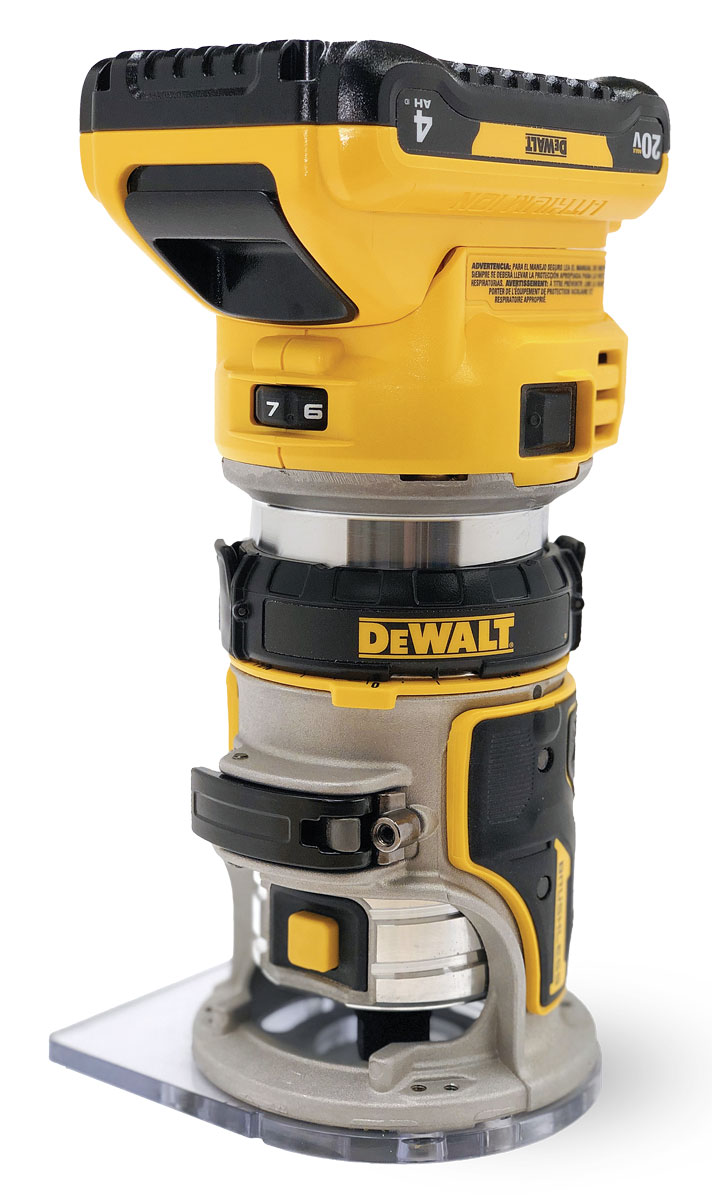
DeWalt DCW600
The DeWalt has a responsive electric brake and a dust-protected rocker switch. It provides an excellent view of the bit without any obstruction from the base and has two bright LED lights. There’s a depth-adjustment ring on the body of the tool with a scale that can be zeroed. It works well and offers precise height adjustment, reminiscent of Porter-Cable’s venerable 690 routers.
The housing diameter of the DeWalt is 2-11⁄16 in., about 1⁄8 in. larger than those of its peers, and its base diameter is about 1⁄2 in. larger than the others. That small difference made this tool hard to grip, and my thumb hurt with extended use. The only way I could comfortably use this tool was by mounting it in a Woodhaven bushing plate, which enabled me to grasp the two knobs on the plate instead of the housing. The DeWalt does not disappoint in terms of power, and it does the most work per battery charge of the group, but I struggle to consider this a compact router, and its additional size makes it uncomfortable to use compared to the others. No accessories are included.
Price $220 (tool only)
Power 18v
Weight 4.6 lb.
Base Diameter 3-3⁄8 in.
Illumination Two LEDs
Brake Yes
Bit Visibility 5 out of 5
Ergonomics 1 out 5
Makita XTR01
This router, which is my second favorite, is stoutly constructed and has excellent fit and finish, with minimal plastic construction. An edge guide and dust-collection shroud are included. It is easy to grip, fits well in the hand, and has good balance. It takes a push on two separate blister buttons on the front of the tool to get it running. Depth adjustment is with a rack-and-pinion mechanism, with easily visible engravings in 1⁄16-in. and metric graduations. A spindle lock and removable base enable easy bit changes. Two LED lights brightly illuminate the work area.
I have over four years of experience with this router and have never been dissatisfied with its performance. After my testing, though, I realized that this router has three shortcomings. First, although the rack-and-pinion depth adjustment works well, I now prefer the screw-type style, which offers easy 1⁄64-in. adjustments. Second, all the other 18v routers have better visibility of the bit. Third, the Makita lacks an electronic brake, which adds an extra element of safety.
Price $140 (tool only)
Power 18v
Weight 4.6 lb.
Base Diameter 2-15⁄16 in.
Illumination Two LEDs
Brake No
Bit Visibility 3 out of 5
Ergonomics 4 out of 5
Going the distanceFor the run-time test, I measured how many linear feet I could rout until the tool completely stopped due to a fully discharged battery. The amount of work per battery charge depends not only on the amp-hour rating of the battery, but also on the density and hardness of the material being machined, the profile of the bit, the depth of cut, and the feed rate. I tested run time by profiling lengths of white oak with a 3⁄16-in.-radius bit (Bosch 85293MC). All of the 18v routers were fitted with fully charged 4-Ah batteries. The 12v Bosch was tested with both a 2-Ah battery and a 3-Ah battery. Generally speaking, I found that with two batteries you can charge them fast enough to keep working without having to wait for a fresh one. For demanding tasks, however, you may need three batteries. |
Metabo HPT M1808DA
This router’s motor starts with a push of a lock button and then a tap on a second switch. Located opposite each other, these mechanisms are easy to operate with a single hand. LED lighting is bright, the electric brake is fast, and the tool features a rack-and-pinion depth adjustment with a scale deeply engraved in the aluminum body. The square base allows excellent visibility of the bit. Unfortunately, this tool’s motor became noticeably warm during testing, despite a fan providing airflow through ventilation ports. After rounding over 97 ft. of white oak with a 3⁄16-in. roundover bit, the motor stopped for nearly 10 minutes, presumably for self-protection.
Metabo HPT sent another router, which also becomes noticeably warm with use, but it has never stopped. This tool is very reminiscent of the Makita, with a housing of the same diameter and similar shape. I like that it is easily powered on and off with one hand, and I appreciate its responsive electric brake. The Metabo’s plastic base seems less durable compared to those on the other routers. It comes with a dust-collection port and an edge guide.
Price $110 (tool only)
Power 18v
Weight 3.8 lb.
Base Diameter 2-7⁄8 in.
Illumination Two LEDs
Brake Yes
Bit Visibility 5 out of 5
Ergonomics 4 out of 5
Ridgid R860443
This router has similarities to the Ryobi, possibly because both brands are owned by the same parent company. It has a plastic body and a die-cast base. I found that adjusting the base was sometimes complicated by friction between the base and the tool body. The square baseplate is illuminated by a single LED light, and it has a sticker indicating the depth adjustment. Its screw-type depth adjustment works well, but I found the release lever for macro-adjustment poorly placed and always in the way of my thumb, which made it hard for me to enjoy using the Ridgid router.
The power switch is a push-pull type capable of single-hand operation, but the switch was finicky, and I frequently felt like I had to cycle it twice before the tool would power up. The battery feels a little loose when engaged on the tool, although poor fit didn’t seem to affect operation or complicate battery changes. The Ridgid comes with an edge guide and a dust-collection port. Bit visibility is good, and the router performs well despite an overall lackluster design.
Price $100 (tool only)
Power 18v
Weight 4 lb.
Base Diameter 2-1⁄2 in.
Illumination Single LED
Brake No
Bit Visibility 5 out of 5
Ergonomics 2 out of 5
Arthur W. Henderson III, M.D., is an ER physician, cabinetmaker, and serial remodeler. Photos by the author, except where noted.
From Fine Homebuilding #316
RELATED STORIES
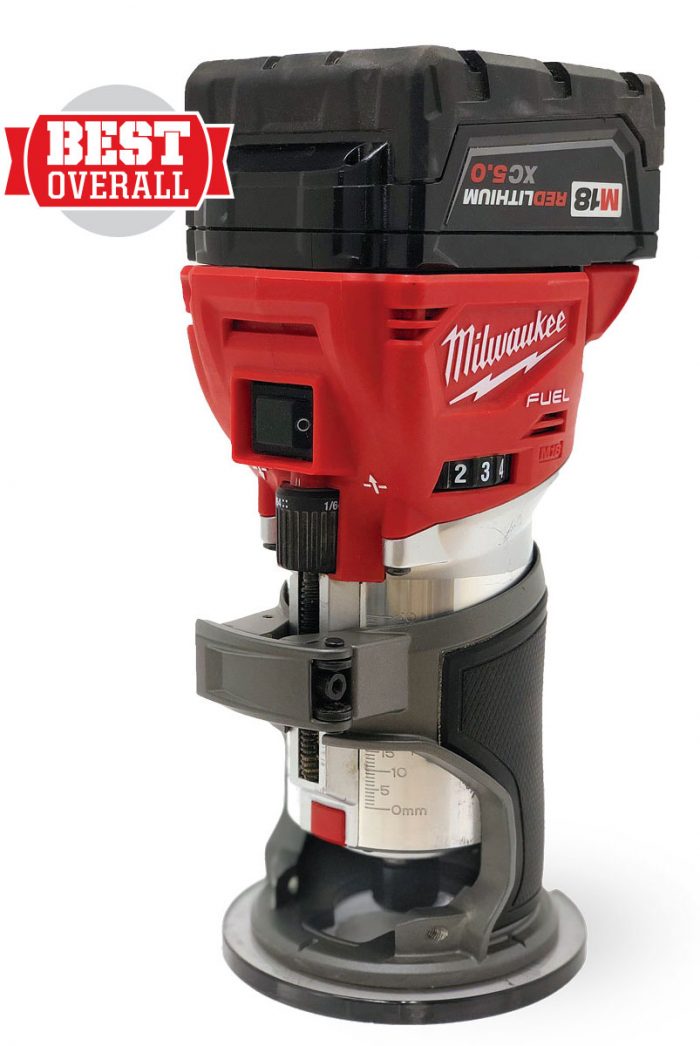
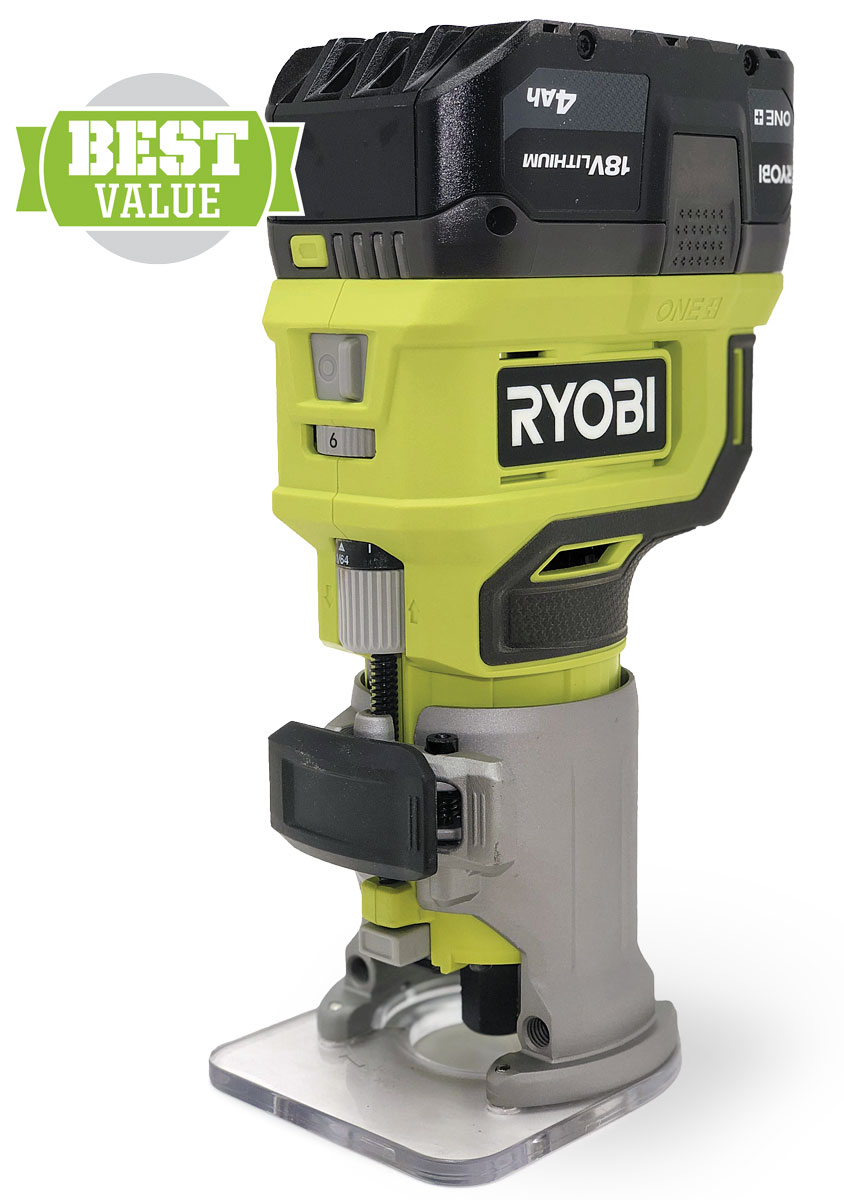
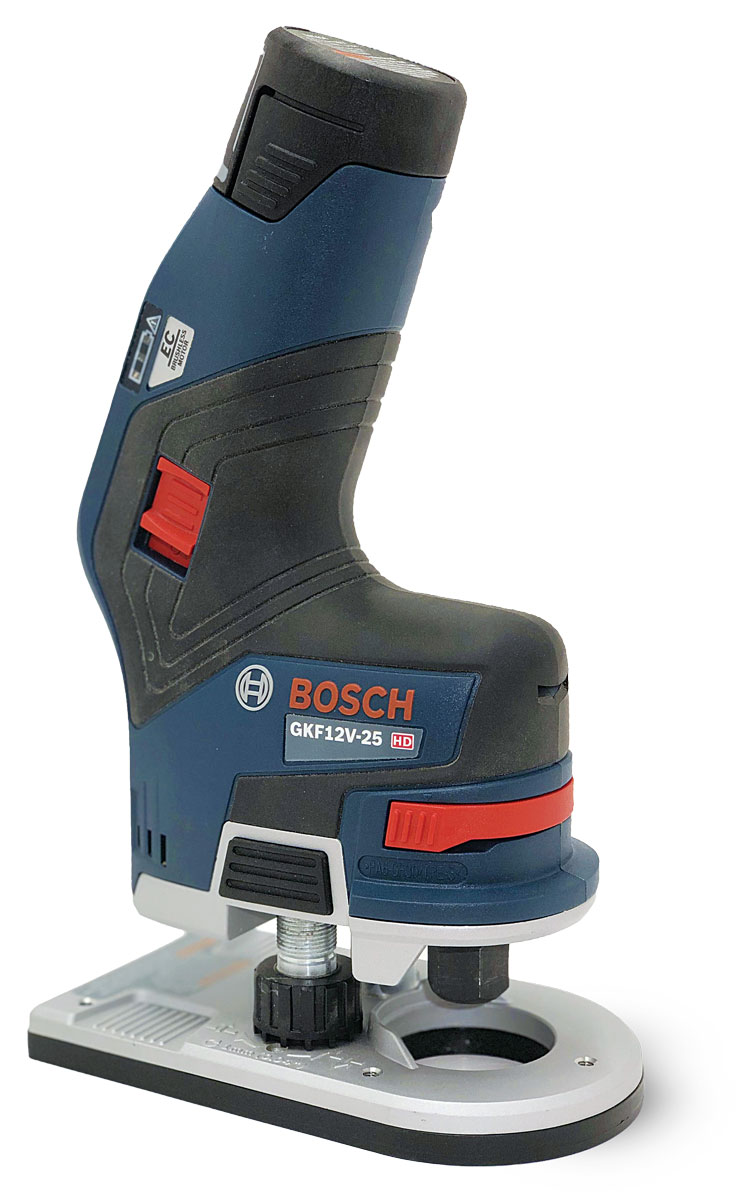
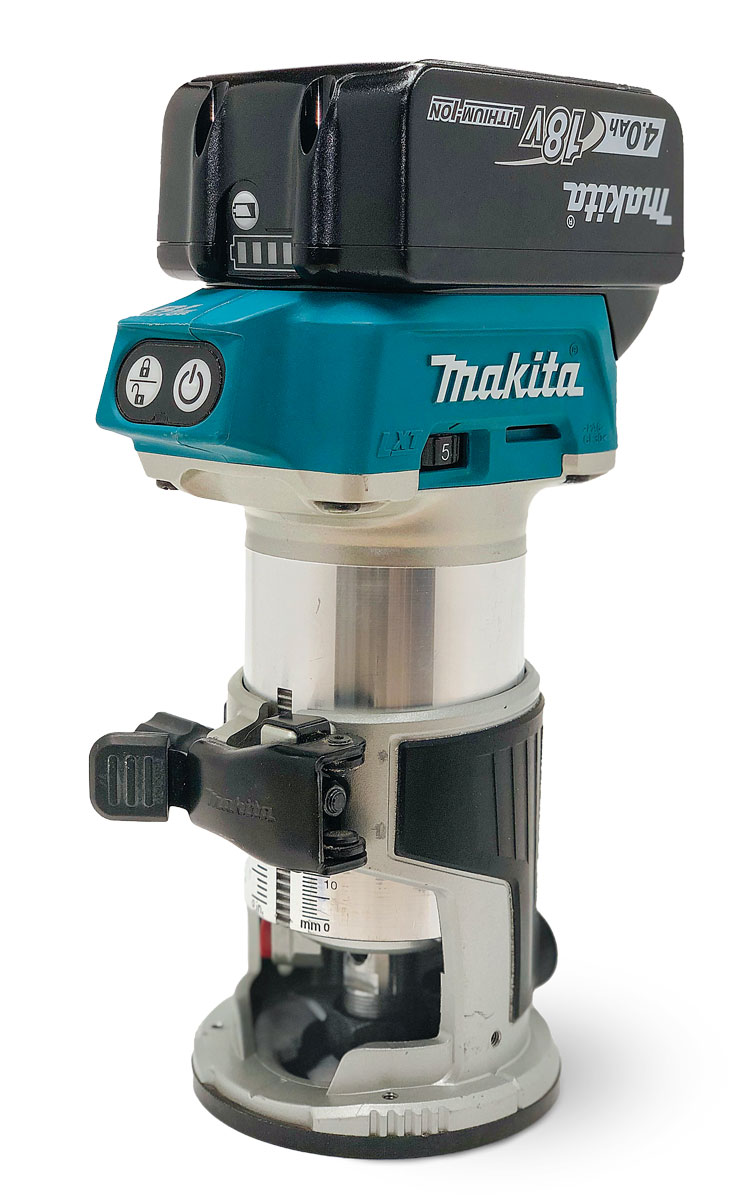
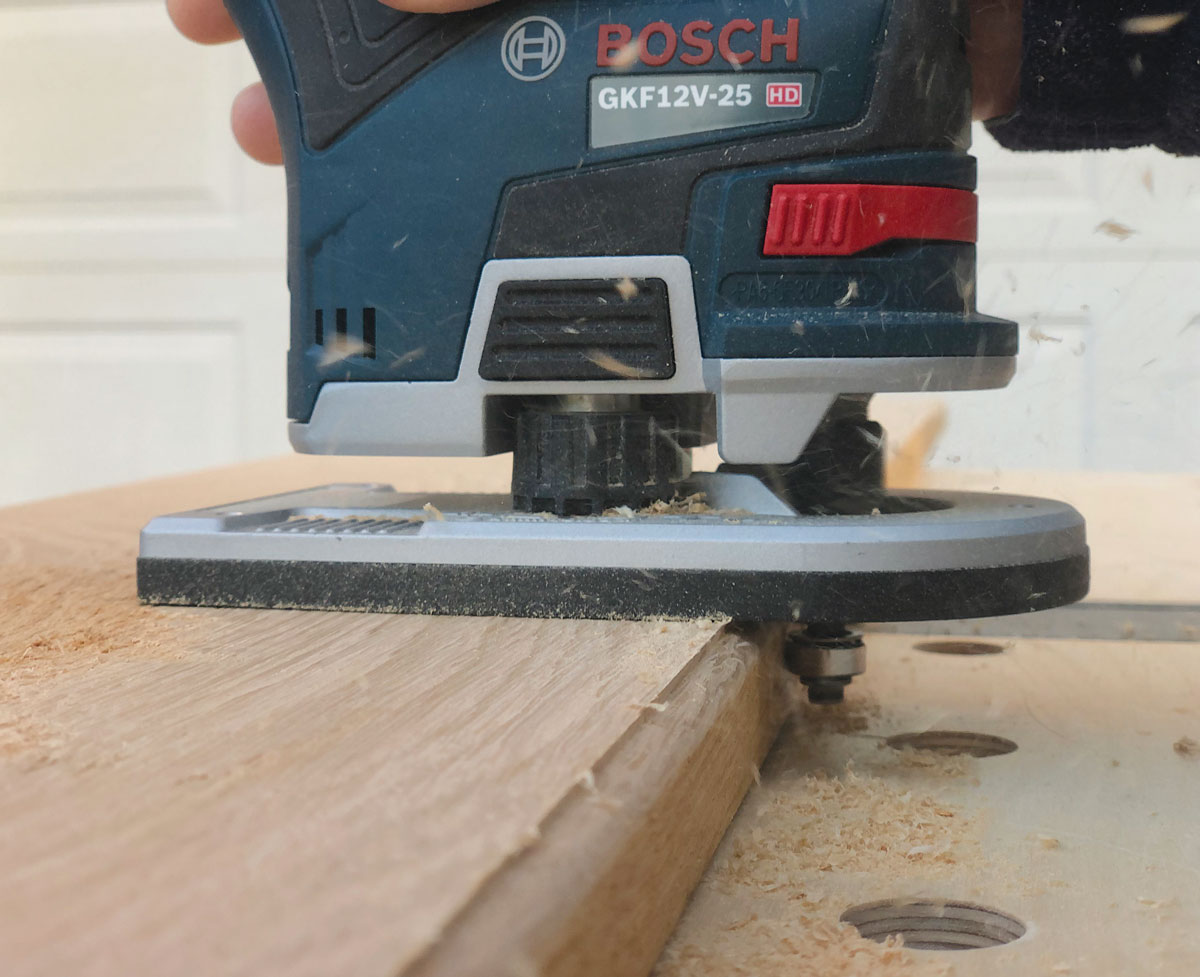
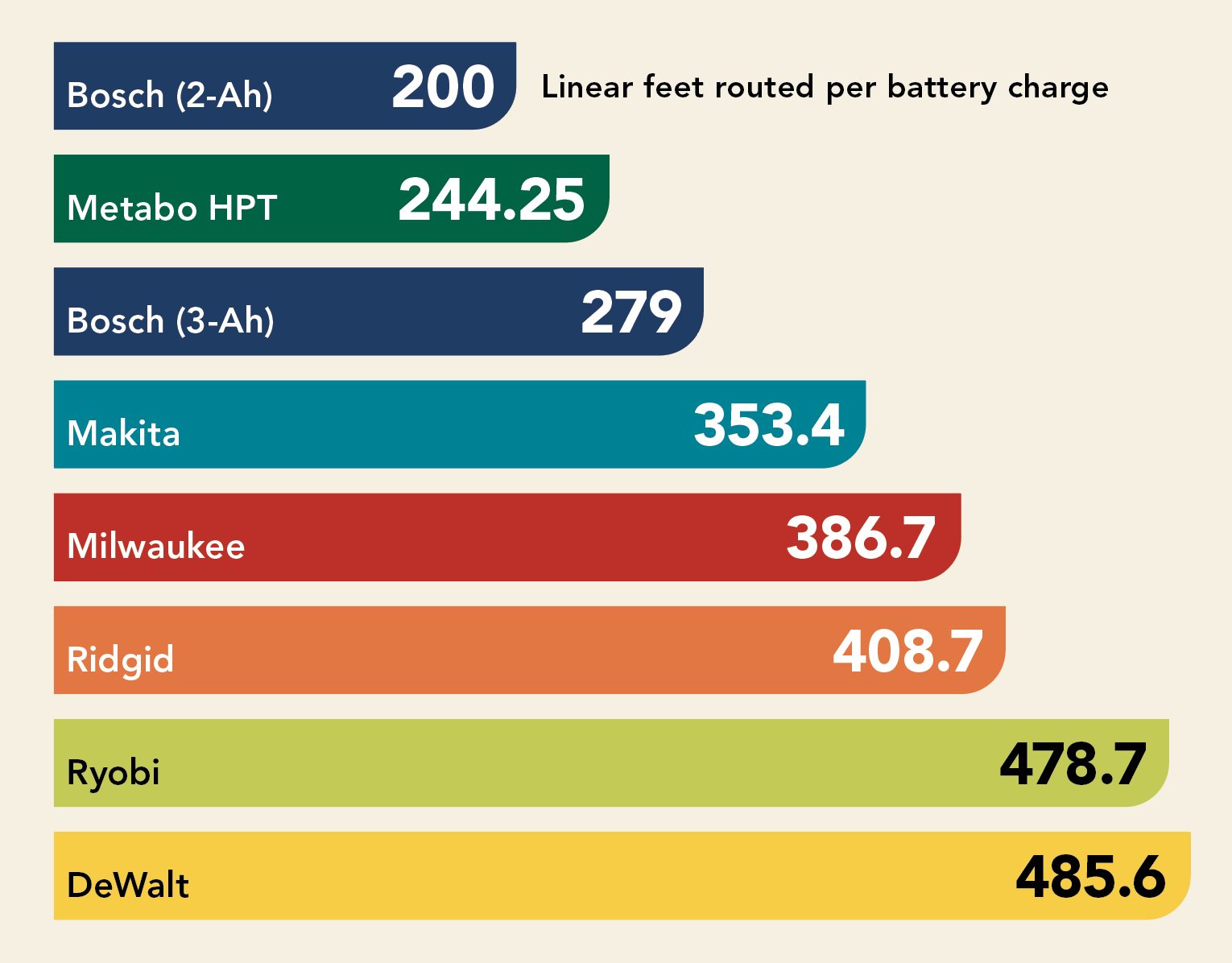
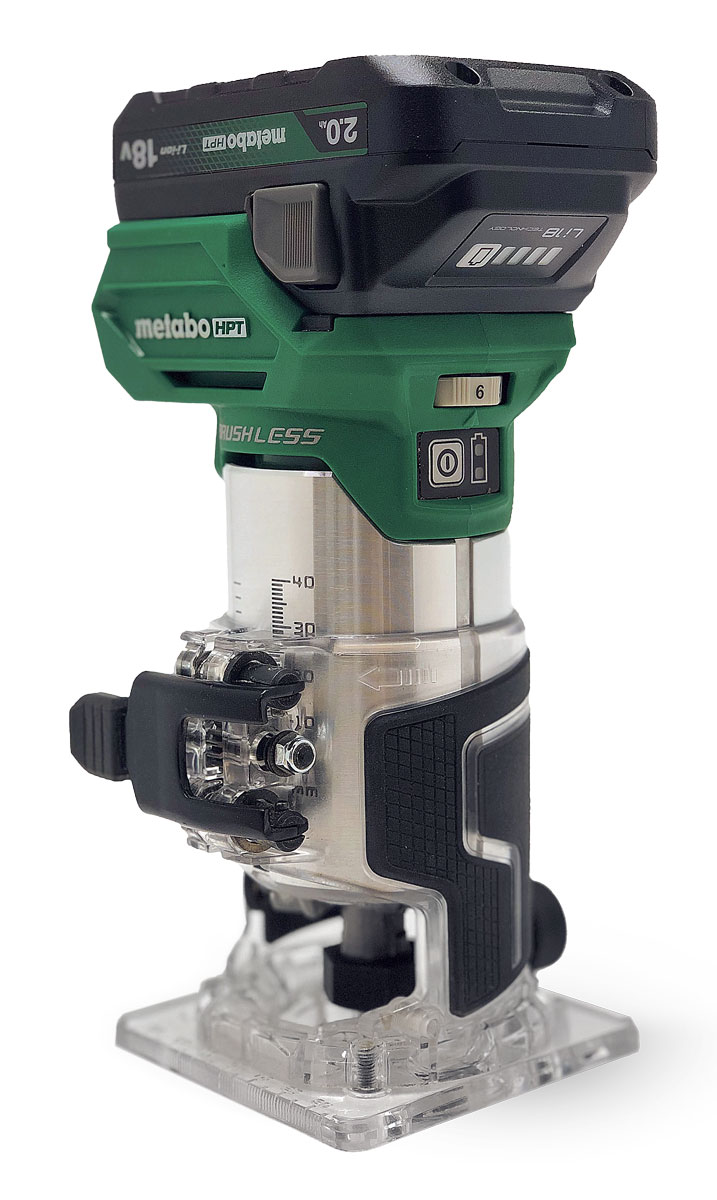
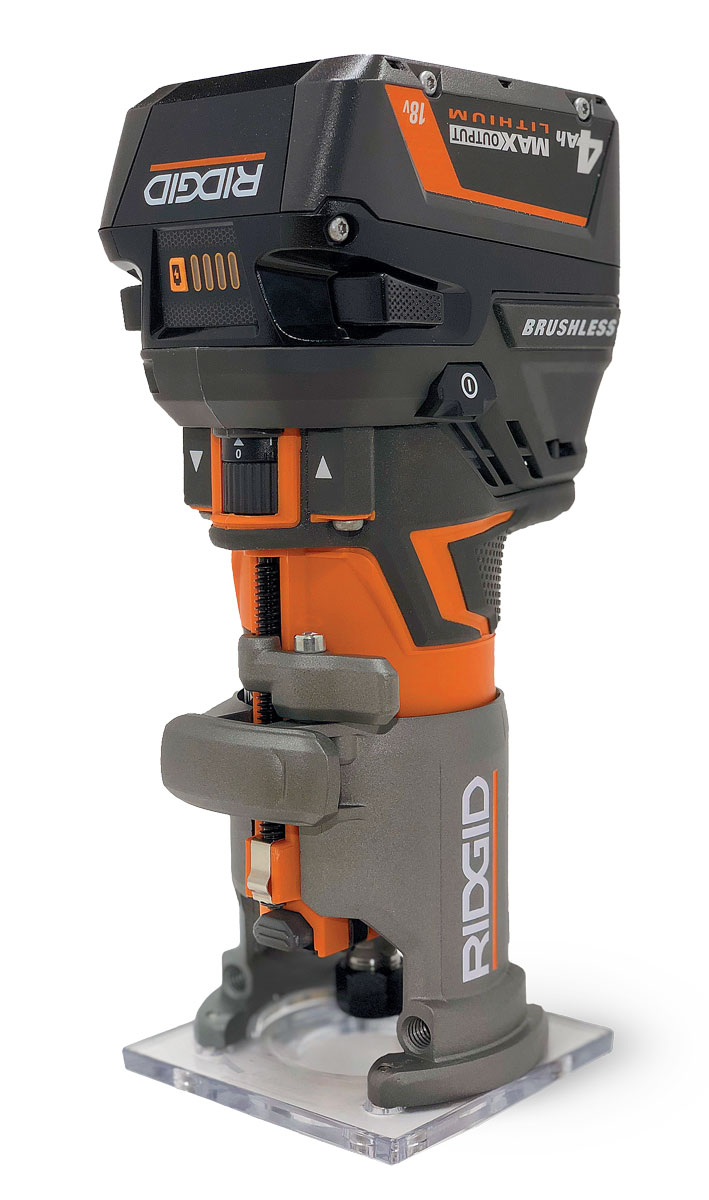
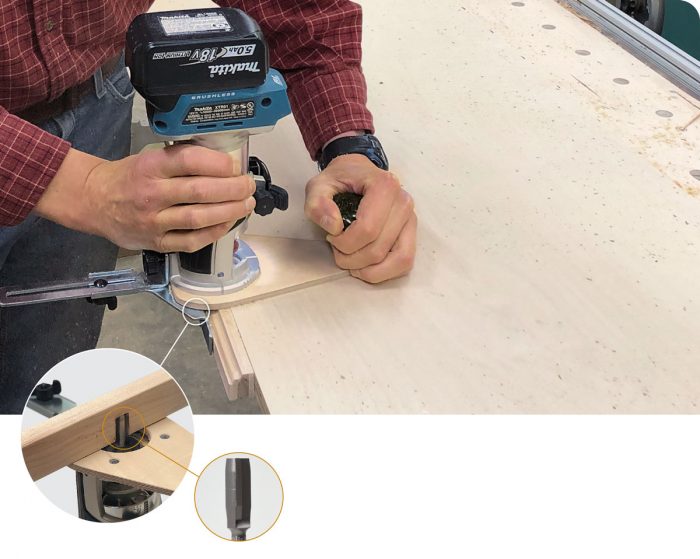
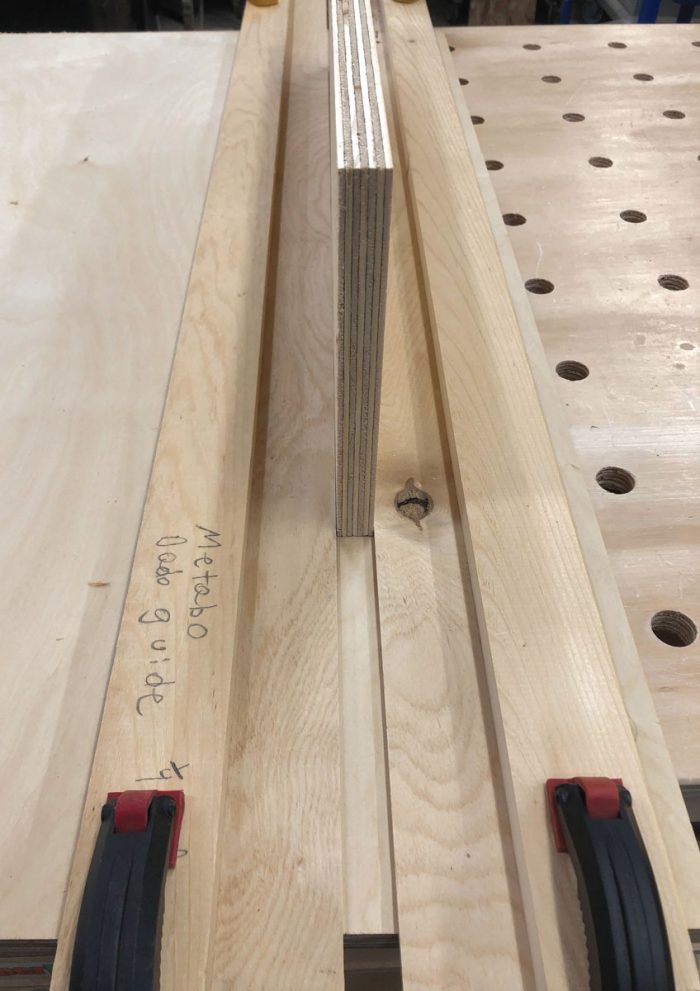

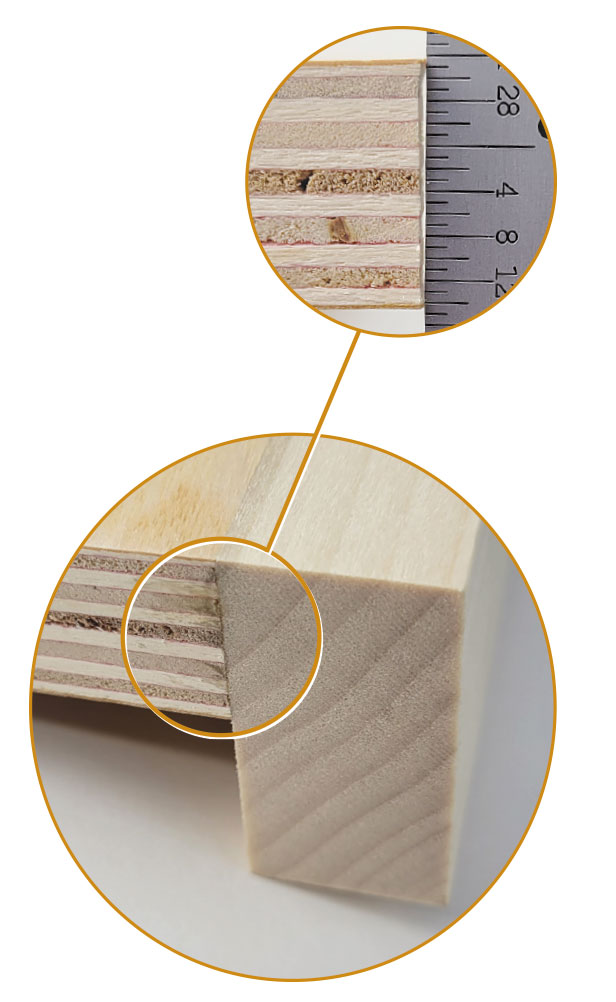





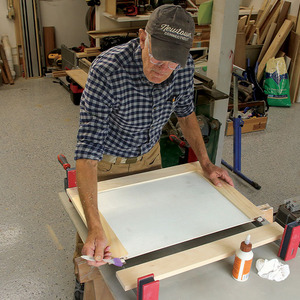



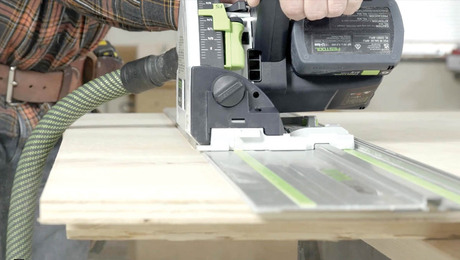
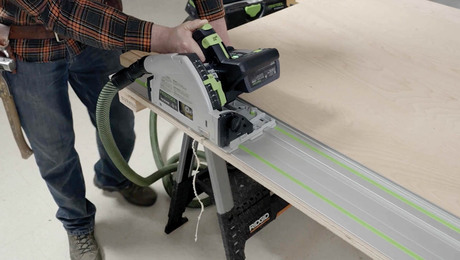


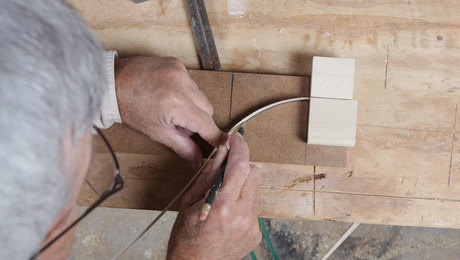
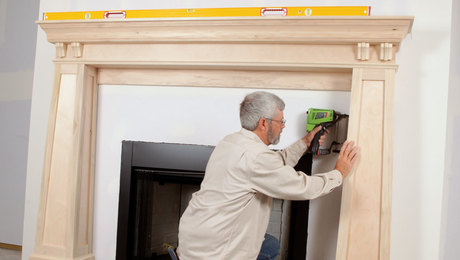
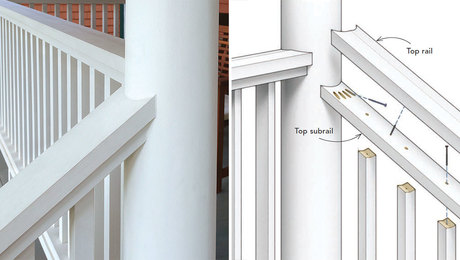










View Comments
Thanks for the review, great timing. I'm in the market for a compact router.